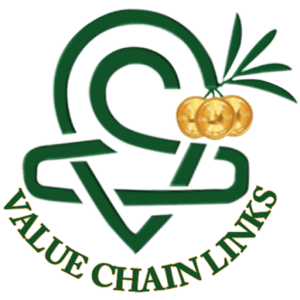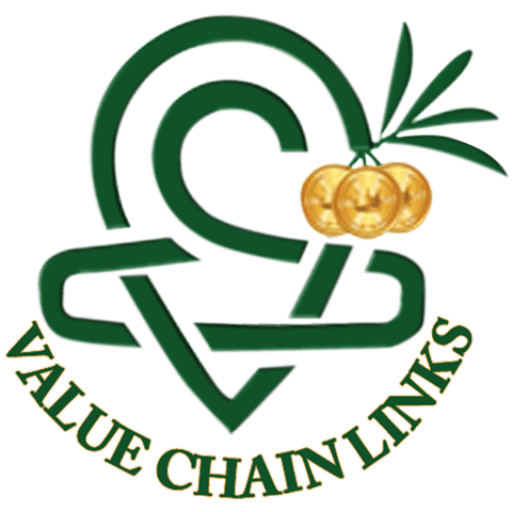IS THERE A BUSINESS MODEL FOR INCREASING PROSPERITY IN AGRARIAN COUNTRIES?

By Dr.Nimrod

| THE Vision-Time-Results (VTR) MODELOrganizations (and individuals) make great efforts to act in light of their vision and long-term desires or goals. Accordingly, we can measure the success of such organizations using the following VTR criteria: 1. Vision – how challenging are the pursued vision, mission, and ultimate goals?2. Time – what is the pace of progress towards achieving the goals?3. Results – what are the actual measurable, goals achievements? MODEL – THE FOUNDATION OF SUCCESSIt is Time that is linking our present Vision with our future Results. If we change one element, we immediately affect the other two.That makes the elements of the VTR model strongly inter-connected. The model itself is very straightforward and easy to comprehend.For example, the more challenging the vision is, the more time it will take to pursue it, more patience, meaning smaller or more steps, before we see the outcome desired result, and vice versa.Very few people, companies, organizations, and political leaders (i.e., nations) can endure the long-term and endless patience required to achieve a tremendous historical vision. VTR MODEL IN POLITICSNelson Mandela had a long-term vision, patience, and readiness to accept the small steps (sometimes invisible) towards his grand goal. Thanks to this, he changed the history of South Africa and set an example to the world. |
 |
We can and even must recognize the importance of people like Nelson Mandela, for they are The Exceptional, they are “one of a kind.” Nelson Mandela has changed the world, but most people will not endure such a vision.
It took the people of Africa hundreds of years to defeat apartheid. Nelson Mandela made the change not because he was the first to see the wrongs. Not at all.
Mandela (like Mahatma Gandhi before him) came with a unified political vision, in which he cleverly used Time to connect his Vision with the desired Results.
He finished doing his time in jail when the results were seen. Or was it the other way around?
The VTR model proved to work, as expected.
Note that Mandela had not replaced the Apartheid Regime with a Less Apartheid Regime. NO!
Mandela had a vision, took his time, and brought the desired result of defeating and eliminating the Apartheid Regime.
Mandela understood the political context of the VTR model and used it within the frame of a suitable political model to favor the oppressed African people.
Models are a powerful tool to predict the future.
AIMING HIGH
Today, to succeed, the people of Africa and other emerging economies need to defeat Poverty and Hunger, not by replacing it with less Poverty or less Hunger, but by defeating it, and replacing it with Success and Prosperity, just as Mandela replaced apartheid with equality.
We can achieve those goals by understanding the economic context between the VTR elements and using it within the frame of a suitable economic business model to favor the people of agrarian countries in emerging economies.
Having the right business model is crucial for bringing prosperity and economic freedom to people in agrarian countries.
One of many outcome results of a successful suitable business-model will be the replacement of Poverty and Hunger with rising Prosperity.
A business model is missing to drive the emerging economies' highly needed transformation.
It took me time to understand that emerging economies' problem is not money, not labor, not land, not skills or expertise, not markets, etc.
The problem is the lack of a suitable, effective, sustainable business model that can transfer the emerging markets' economies into developed ones.
Therefore, the challenge is turning Traditional Agriculture into Agro-Business-Industry, without pushing but instead letting the market pull.
To feel up the gap, the Biofeed team developed the Green Valley model, which fulfills the need for a useful business model to transfer emerging agrarian economies into advanced, agro-business-industries, export-oriented.
In developing the Green Valley model, I took advantage of my background and experience as an Israeli farmer, an entrepreneur, inventor, scientist, businessman, and a visionary person.
I believe that the entire world will be a better place for all when the emerging economies enjoy a better future, based on Prosperity, instead of No Poverty or No Hunger.
This global vision resonant with my vision for protecting our environment and health through economic incentives that encourage an eco-friendly health-oriented agro-industry.
Green Valley model is taking some aspects of the emerging economies that people view as 'negative' and leverage them into relative advantages. It is also using the seemingly 'weaknesses' of emerging markets to benefit its farmers, the value chain, and the state.
| OUTLINE OF THE GREEN VALLEY MODEL1) Applied Completely and Simultaneously. Like any machine or factory, the Green Valley model will live out to its expectations when fully applied and operational. In some cases, such as in agriculture, it may take a few years, e.g., until the tree grows.2) Export-oriented. Green Valley revolves around increasing exports as a vital tool for long-term and sustainable economic change. To export, farmers need to stand up to higher quality standards.3) Branding and High Added Value Crops. Green Valley is about increasing farmers' income by selling branded high-quality, high added-value crops to premium markets.4) Vision2Market approach. Green Valley believes it should reflect the vision of the country where it is located and supported.5) It's all about people. Green Valley is a model focused on people and their long-lasting prosperity.6) Government Involvement and Role. Its role is to create conditions and a business environment, including regulations and legislation which will enable the Green Valley model to exist, perform well, and succeed.7) Business-oriented. Green Valley's model and structure are fully business-oriented, expecting that its participants will do better with it than without it.8) Results-oriented. Green Valley model is ultimately judged by its ability to bring sustainable abundance and prosperity for the country and farmers where it is implemented. Green Valley is not "another business model alternative" or "an investment opportunity." Yes, partially, it is that, too. But Green Valley is mostly "the thing that emerging economies desperately need to succeed."Green Valley bases its business foundation on a sustainable, long-term alliance of interests amongst its partners.As we speak, the currently used agro-business models did not prove to bring the desired results in emerging economies, such as Africa and India.Green Valley may be the only hope for agrarian countries, and their farmers to escape poverty and hunger, take their place as international food suppliers, improve their economic capacity, and gain the respect they deserve.Green Valley is made by a farmer for farmers.>Press here to learn more on the Green Valley principles< |
| My way of keep improving is by getting your feedback and advice. Thanks. If you find this article interesting, share it with someone who should see it and benefit from it! |

